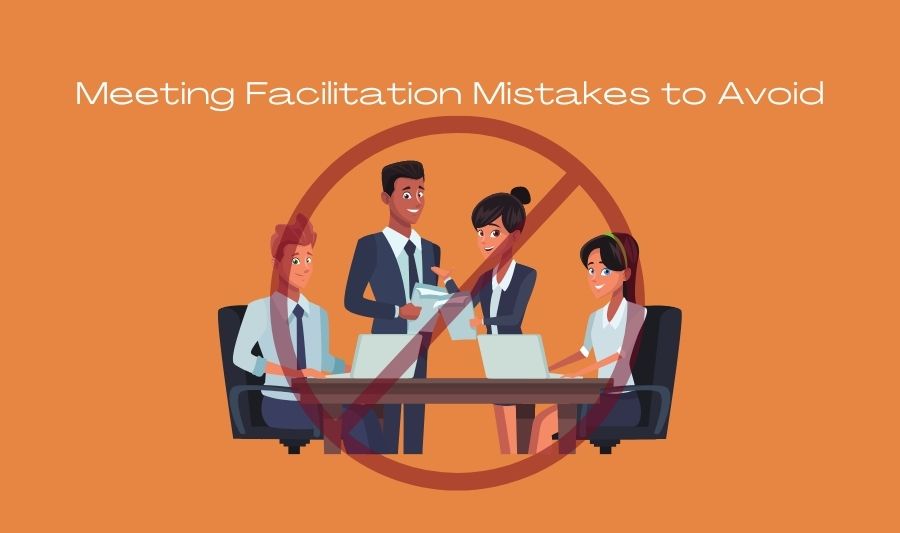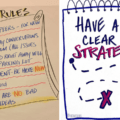Meetings don’t have to mean a bad time. Meetings can be a great way to share information, get people on the same page, unify your team, and move a project or idea forward. However, for those things to happen, the meeting needs to be meaningful, purposeful and led by a facilitator whose job it is to ensure smooth running. Here are three mistakes that all meeting facilitators should avoid if you want to deflect those “this could have been an email” complaints.
1. No agenda, no attenda
Sending out an agenda before your meeting improves attendance and also helps you manage expectations. You don’t want to start a session and have the first question be “so why are we here?” Try to give attendees at least 48 hours notice so that they can plan around their schedules and prepare any materials or questions. Your agenda should cover the goals, topics, and discussion points you plan to address in your meeting. It can be formal or informal, depending on your meeting, and can be as in-depth or high level as you need. Allow time for other speakers or key participants to add their own thoughts or feedback before sharing the agenda.
2. Not having an icebreaker ready
The only thing more awkward than a Zoom meeting sign-off is a Zoom meeting start. People are arriving at different times, fumbling with their technology, and trying to figure out whether the event is already in full swing. Have a simple icebreaker ready to go in your chat sidebar to engage people and keep them focused on the meeting instead of on the other attendees fiddling with their cameras or microphones. Icebreakers might include sharing their city or location, naming the song they last played, a “this or that” vote, or a show and tell with pets or their office view. Tailor the icebreaker to your company culture and the type of meeting that’s in progress – not all icebreakers are ideal for all situations.
3. Not sticking to a schedule
One of the worst things a meeting facilitator can do is fail to track time or hold speakers to a schedule. Honoring and respecting your attendees’ time is vital to a good meeting outcome. Arrive early so that you can let people join the waiting room or participate in the icebreaker you’ve prepared. By showing up early you can actually begin at the scheduled time, not five or ten minutes after. Track time throughout, keep people on point, and help transition from speaker to speaker or topic to topic. Update speakers with the event progress, and for virtual meetings monitor the chat for questions and comments that can be answered offline or in the chat rather than on-screen by the speakers. Try your best to make your scheduled finish time a “hard stop,” and start wrapping up a few minutes before so that you can end when promised. If it looks like you are going to end early, then give back the gift of time by saying “We’re ending early, so I’m giving everyone 5 minutes back”.
4. Skipping the housekeeping info.
Setting expectations is key to a positive meeting outcome. Build a few minutes into your meeting schedule to let people know who’s who, whether microphones will be on or off, what will be covered, when and how questions will be taken, whether you’re recording the session, and when the recording or supporting documentation will be available. This helps eliminate any chaos and confusion, and lets people know what to expect regarding their participation and feedback. You can share your housekeeping information verbally, or using pre-prepared slides that walk people through basic functions.
At See in Colors, we offer real-time graphic recording services that help support meeting facilitation in an engaging way, while also giving attendees a visual document they can refer to during and after the meeting. Avoid making the most common meeting facilitation mistakes. To ensure your next meeting goes smoothly, talk to us about our meeting facilitation and consulting services, where we consult, co-create, design, and facilitate your meeting so that you can save time and get unstuck.




